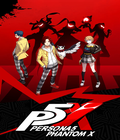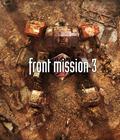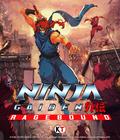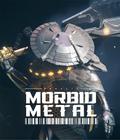There are parts of the first game that I enjoyed, but I maintain that Kingdom Come: Deliverance had its flaws. It had punishing combat that was difficult to get a feel for, and it never really became the open-world game that it felt like it aspired to be. Surprisingly, you can take a list of all the issues I had with the first game, and it would also be a list of things that have been notably improved in the sequel. Kingdom Come: Deliverance II isn't just a well-improved sequel; it is one of the best open-world RPGs released in the last decade.
OK, the developers perhaps haven't addressed all of the issues; the save system that revolves around either sleeping in a bed you own or drinking what is effectively a save potion remains the case in the new game. However, while the previous game would only do its own autosaves once in a blue moon, the new game seemingly does them much more frequently. I understand the developer's vision around limiting saves in this way, and while I still don't like it, the system feels far less punishing this time around — in an unmodified game. One of the most popular mods for the game is one that removes this restriction and allows unrestricted saving.
Deliverance II picks up right where the first one left off, with Henry and Hans riding on horseback toward Trosky Castle to deliver an important message. Things do not go as planned, Henry's party gets ambushed by bandits who steal the message, and the game gets around the, "But why am I so low level again?" issue via the significant amount of injuries Henry sustains as one of the few survivors. Henry gets nursed back to health by a kindly old woman who lives in the middle of the woods, and once healthy, he sets out to make his way to the castle and contact its lord.
This whole section of the game also serves as its tutorial and does well to bring you up to speed on the most important aspects of the gameplay. It is a pretty linear but compelling experience, and once you're through it, the game world really opens up. The game starts in a large, sweeping expanse of Bohemian countryside filled with beautiful meadows and winding pathways through woodland areas. All the while, Castle Trosky can be seen from some of the furthest reaches of the land. Points of interest can be found as you explore, and while you can fast-travel between known places, you have to walk or ride there first.
You have to pursue quest objectives to move the story forward, and there are a bunch of side-quests to find and complete. I had just as much fun chasing down these side-quests as I've had tackling the bigger main quests. Each one is more of a side story to be enjoyed, such as getting catastrophically drunk with the leader of a band of Cumans and trying to help the love life of one of his soldiers. You are free to tackle quests in any order, but there is a point in the game where the plot moves on to a new area and you cannot go back, so it is worth doing side-quests earlier.
The combat has been significantly improved, taking the often-frustrating combat system from the first game and turning it into one of the most enjoyable features of the new game. Like the previous offering, there is a combat rose in the middle of the screen with various directions on it. When in combat, your view locks onto an enemy, freeing up the mouse so you can move it in one of those directions to move your weapon to that side. Moving it up readies your weapon for an overhead swing, move it to the left to attack from the left, etc. At any point, you can left-click to attack from the direction your weapon is positioned from.
The key improvements are in the improved communication to the player. You can block attacks simply by holding the right mouse button, but press it at the appropriate time, and you'll parry the attack instead. This timing can be learned by watching enemy animations, but it is also represented on-screen by a shield icon that appears in the middle of the rose. I used the combat rose to learn the timing, and then from then on, I could just keep my eyes on the enemy. After a parry, you can choose to attack with a riposte, but the enemy can also parry that and respond with a riposte of their own. This back-and-forth can go on for quite some time, and it is a lot of fun.
Then there are the master strikes, which are something to wield and be wary of. During the parry window, instead of blocking at that moment, you can instead try to position your weapon opposite to their position and attack during that window instead. This results in a strike that cannot be parried by the enemy, complete with its own unique animation. It makes you feel like some champion swordsman … right up until you realize that enemies can also use this technique. While it might be easier to attack an enemy on the side opposite to where their weapon is for basic attacks, doing so also leaves you vulnerable to taking master strikes of your own if your opponent is a more trained warrior.
Not only do enemies react to being hit, but there are also longer-term visible changes. Wounded enemies may hold their weapons weakly, with their other hand clutching their side. Their clothing and faces will become bloodied because of your strikes. There is never an enemy health bar, so you won't know how wounded your foe is, but when they can barely hold up a weapon and their overcoat is soaked in blood, you can be pretty sure the fight isn't going to last much longer.
As both criticism and praise, Kingdom Come: Deliverance II is geared toward longer play sessions and not for quick 20-minute windows. The save system reinforces this, of course, but it is present in many other elements of the game. Making alchemical potions is a fun "minigame" of sorts where you must choose different base liquids, your ingredients, and follow a recipe with nearly as many steps as it takes to cook food in real life. Forging a weapon isn't just about picking the ingredients, but you must take the raw material and evenly heat it up before forging it, one hammer swing at a time, on an anvil. Henry will even whistle while he works, and if you time your swings to the tune, you'll keep even on stamina and will be able to do so for longer periods of time. It is a game meant to be savored for longer sessions of play, with a pace of its own that manages to neither feel rushed nor become a drag.
You level up skills by doing things relevant to them; using a type of weapon increases your skill in that weapon, chatting with people increases your charisma, and throwing back a few increases your drinking skill, which I didn't think mattered until that Cuman quest I'd mentioned earlier. As you level up skills, you can also get perk points to spend in them, which can also tailor them to your preferred play style, such as improving your ability to fight with a sword in one hand and without a shield in the other. You can also pay people in game who are willing to increase your skills via their teachings, but it tends to cost a lot of coin.
The paper-doll style inventory system where you equip gear is as complex as ever. To be able to equip heavier armor in the armors slots, you'll often have to first equip a padded layer in a different slot relevant to that part of the body. Every piece of clothing can either raise or lower stats, such as conspicuousness (how easily you can be seen) or noise (how easily you can be heard) in addition to the normal protection that armor provides. If you intend to be sneaky, you'll equip gear that doesn't provide as much protection but lets you pass through areas without being detected. Meanwhile, my style as more "I am going to equip enough plate armor to become a human tank," and giving the enemy a chance to hear and see their doom first is just a courtesy.
If there is one thing that remains consistent throughout, the game is quite beautiful. The sweeping landscapes look brilliant, whether it's wild grasses in the sun or the dingy darkness of a moonlit forest. Character faces have a lot of detail, as do their models and what they are wearing, and there is a lot of purposeful lighting and shadowing. As a result, it feels like a world to be lived, plucked right out of some countryside of the past. It is a game whose beauty isn't in the spectacle of specific areas, but rather in the way it makes even the most mundane areas feel "lived in."
I didn't have significant expectations going into playing Kingdom Come: Deliverance II. It is fundamentally the same "type" of game as its predecessor. However, a lot of care has been taken to improve the areas where its predecessor faltered and to reinforce the areas where it had done well. It results in the kind of open-world RPG experience that reminds me of the glory days of Oblivion and Morrowind. As a result, Kingdom Come: Deliverance II sets a high bar for what modern games of the genre should be.
Score: 9.2/10
Reviewed on: AMD Ryzen 7 5800X3D, 32 GB RAM, NVidia RTX 4070 Ti
More articles about Kingdom Come: Deliverance II











 Kingdom Come: Deliverance II is an Action/RPG that lets you dive back into the immense and immersive world of middle-ages Bohemia as you continue Henry’s journey.
Kingdom Come: Deliverance II is an Action/RPG that lets you dive back into the immense and immersive world of middle-ages Bohemia as you continue Henry’s journey.



























